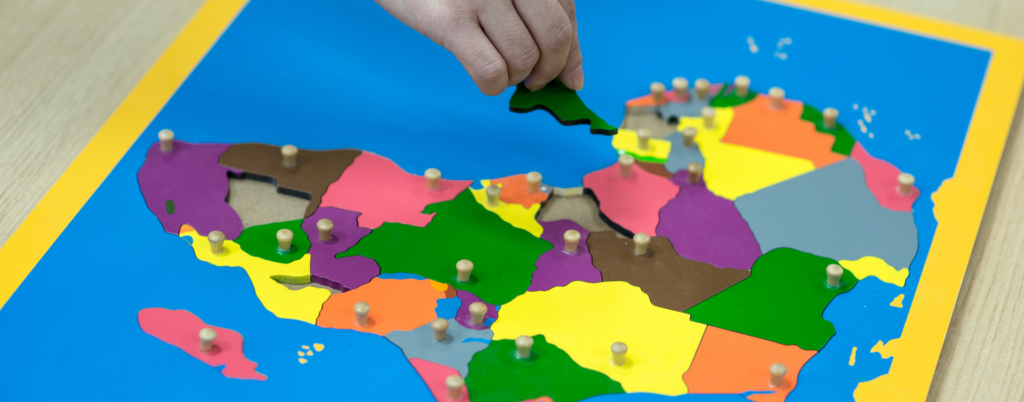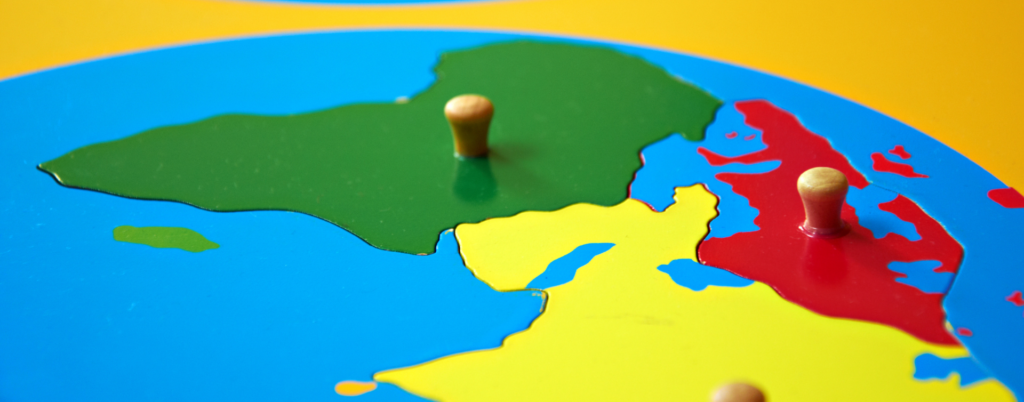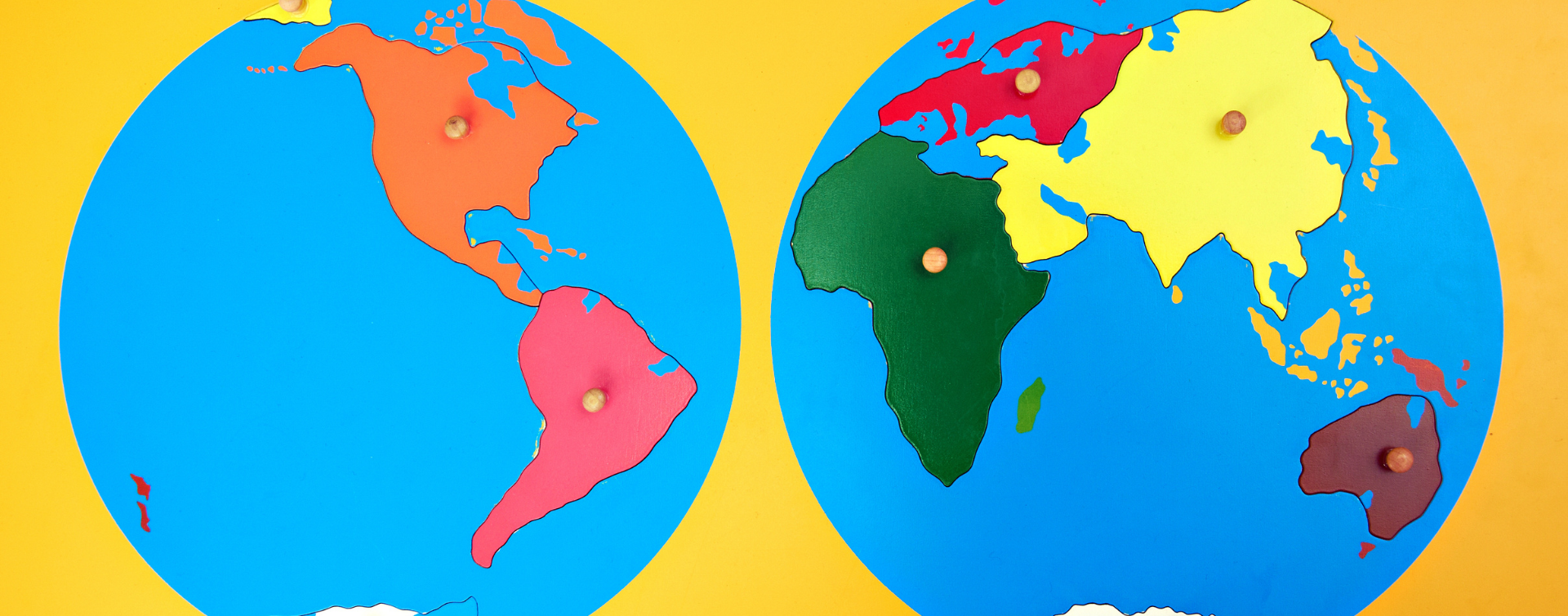What a wealth of opportunity there is to be found in the Montessori puzzle maps. In most trainings we are shown how to move from the continent globe where the child is given a three-dimensional representation of our world, and the coloured land forms are named continents, to the flat maps where each continent is broken up into its countries. The manuals we use outline how we can do three period lessons to name the countries and that is often where these magnificent materials are sadly left. By extending the use of the materials, we can however truly ‘give the child a vision of the whole universe’ (Montessori, 1989) and truly capture the imagination of the child.
During my training (in the olden days!), we were required to make pouches for each continent of mothers and their babies. Montessori spoke about the affinity that children had for such images as they were so relatable to the child. In today’s time, with the nuclear family being far more diverse, our folders would include fathers and babies, families with single parents, two moms and a range of other possibilities. The images we present to children need to reflect firstly the diverse community they find themselves in and secondly the diverse world in which they live. This is a call to revisit our materials and ensure that stereotypes and bias are not evident in what we present to children. The way in which we introduce cultures should be done with the greatest respect, ideally with a person of that culture sharing their story with the children at an age-appropriate level.

A classroom with a Scottish child would probably not see the child dressed in a kilt day in and day out, but it would be a lovely aspect of her/his culture to share with her/his friends in bringing a kilt to school and perhaps having mom or dad explaining what the colours, patterns and design are all about.
In South Africa, the richness in the diversity of our cultures should be celebrated and shared to highlight their unique contribution to our country. It is our understanding of our similarities and differences as South Africans that develop our unity.

Returning to the puzzle maps… I would encourage you to use the children’s interest in this material to delve deeper into the countries of our world and the provinces of our land. What do the people in this country look like? What do they eat? What do they celebrate? How do they get around?
Remember that older children need bigger questions…what do the colours on this flag mean? What do Scandinavians do in winter when it is dark for so many hours a day? What would be the best way to support the flood victims in Mozambique? Provoke their learning with these open-ended questions rather than projects that answer finite questions.
Our work is to capture the imagination of the child and ensure that the flame of interest in their world and their love for their fellow human beings stays ignited. I imagine this is what Montessori meant when she urged us to teach children about peace.
Heidi van Staden
February 2021
Reference List:
Montessori, M. (1989) To Educate the Human Potential Oxford: Clio Press



